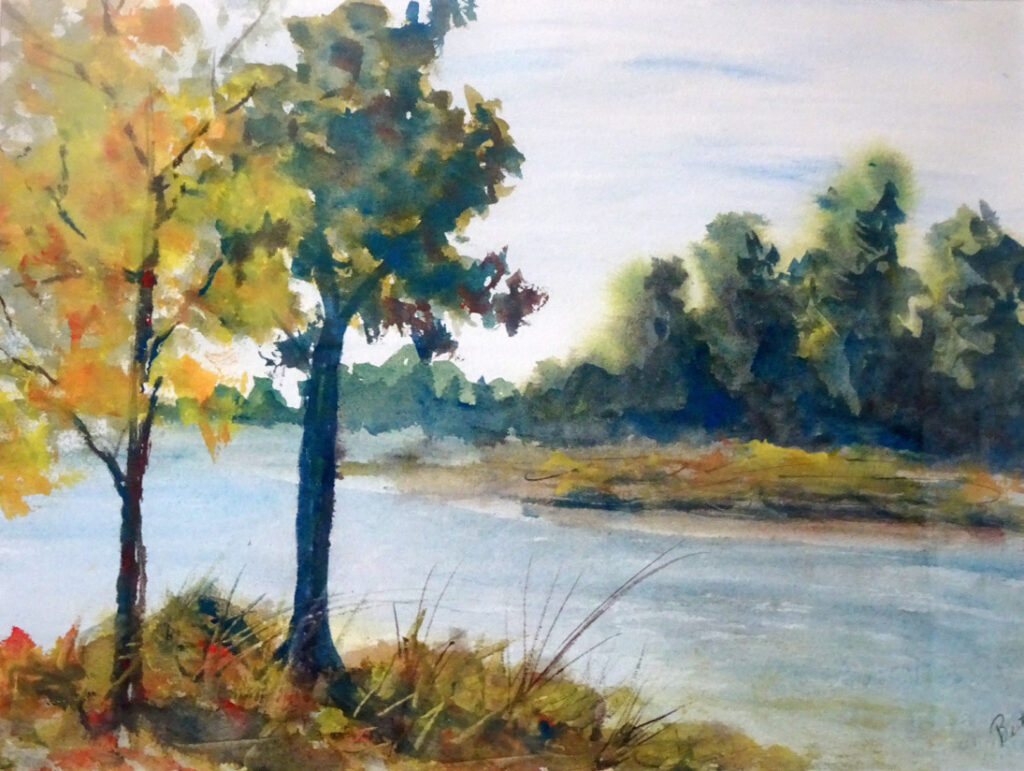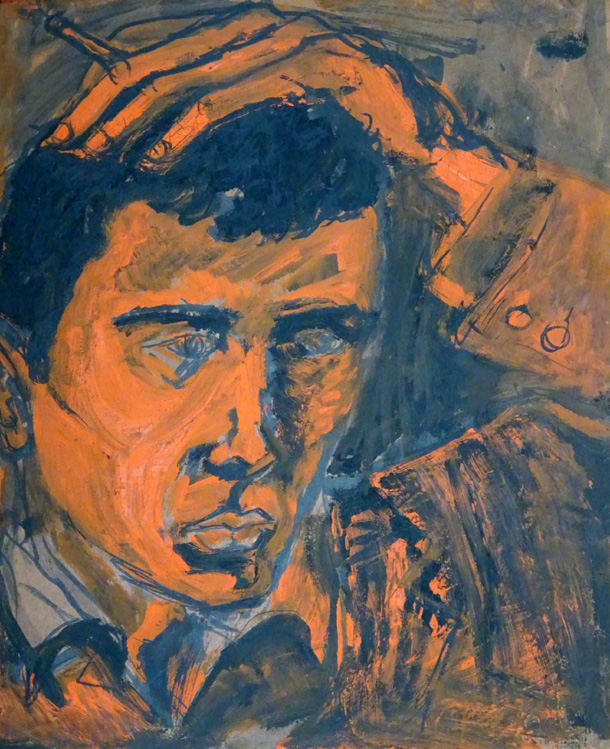
As a child I knew that my mother, Bertha Cohen Ross, (1917-1994) liked to paint. I still have her set of oils in my closet, but I didn’t see many of her efforts until after she had passed. There was just one large portrait, long since lost, hanging on a wall. Born into a poor family, like her four siblings she also played piano. She earned a BA in Music from Hunter College in 1939 and taught kindergarten in New York City public schools most of her life. She loved teaching and always had a piano in her classroom. She loved to work in clay and pastels, and late in life, after retiring, took art classes in various media.

Both of my parents knew Ed McCormack, (artist, writer and founder of Gallery&Studio magazine) and appreciated his art. My father had one of Ed’s self-portraits which hung over his desk at home that my father cherished for many years. We also had a caricature drawing by Ed of my father that our whole family treasured.

Ed in turn saw several of my mother’s watercolors, including those pictured here, and his assessment was that they were “quite good; she was truly an artist.”
I first met Ed in the late 1950s when we were both around 15 years old. At the time he lived with his parents and sister on Madison Street on the Lower East Side. They later moved to Staten Island where I watched Ed paint the self-portrait (on a piece of cardboard from a pad of paper.)

In a strange coincidence, on December 16, 1960 two airplanes collided over New York City, at the time, the world’s deadliest aviation disaster. The United Airlines DC-8 crashed near where I lived in Brooklyn and a TWA Lockheed exploded on Miller Field, in New Dorp, a short walk from Ed’s family’s house.

My father, who worked in the heating industry, struggled to be an author, and, while working on his never published Opus Magnum novel, interviewed Ed at length while developing one of the characters. It is too bad that he was not more enthusiastic about my mother’s abilities as an artist, which had an unfortunate effect on her. She talked about her art classes but rarely showed us her paintings, only a few of which hung on walls in their apartment or were given as gifts, and she hardly spoke about them. Some of her efforts were included in small shows where she took her classes, but I don’t think I was ever invited.

I was therefore quite surprised after my father died in 2006 to find a large portfolio in their closet with more than a dozen beautiful watercolors, all of which I quickly had framed. They seem to date from the 1980s through early 1994. There were also examples of her expert calligraphy, including copies of invitations and announcements she had created for me and others over the years, and a number of beautiful collages. Elsewhere there were several ceramics, including a Head of Mahler.
I tried to interest the West Side Artists Coalition, a small community gallery in the former street-level subway kiosk on Broadway and 96th Street, in a show, but as I was unwilling to sell any of the paintings, they weren’t interested. But here are some examples that are cherished by the three generations that followed my mother, several of whom are also artists in their own way. I assigned the titles. I especially appreciate the mixture of abstract and representational in her work.

My mother was a child of the depression in more ways than one. She lost her own mother when she was eleven and she lived through the trials and tumult of the 1930s. The youngest in the family, she was doted on by her siblings and learned early the importance of music and art as means of expression as well as tools of a sort for coping with the vicissitudes of life. We fortunately hear her voice now and then from a cassette she made for my daughters 40 years ago with the music of Bach and children’s stories with Pete Seeger. Her watercolors are frequent reminders of her talent, dedication and love. G&S





Leave a Comment